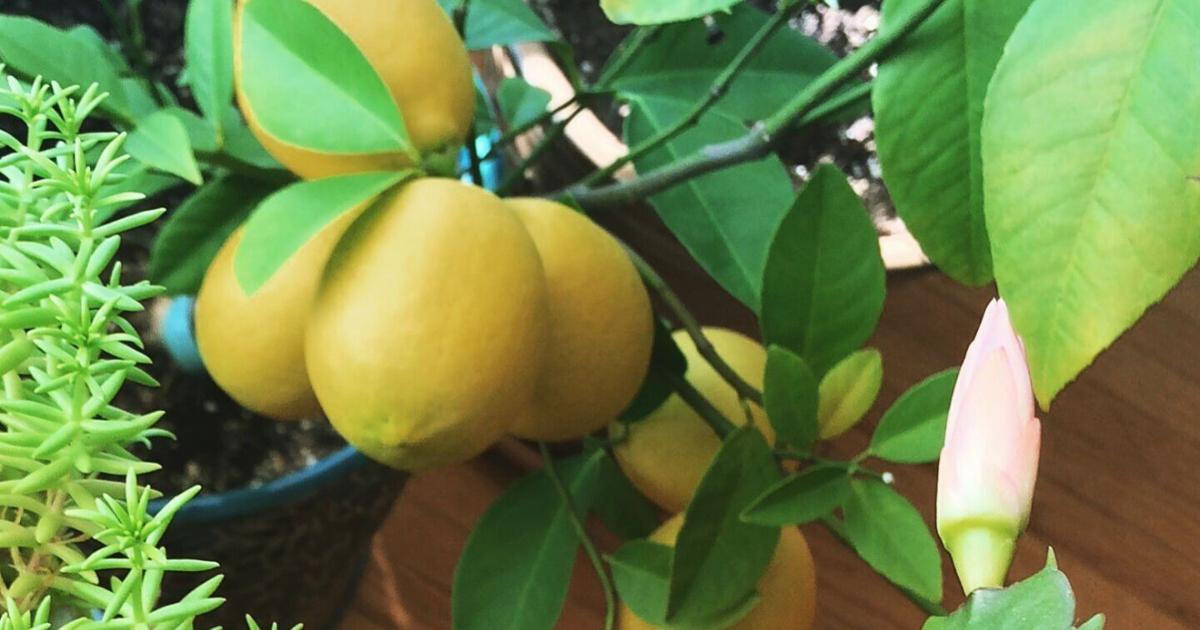Nothing brightens up a home as much as a lemon, lime or orange tree growing indoors. Growing citrus indoors in the north requires the right plants, plenty of light and a bit of care from the gardener.
With that, you’ll be enjoying fragrant blooms, lush plants and tart fruit.
Best citrus for indoors
The citrus trees grown in Florida or California are big, in-ground trees and most of those varieties will not grow well in containers. For best results growing citrus indoors, choose varieties bred for container culture.
Examples include Calamondin or Satsuma oranges, Meyer or Improved Meyer lemons, kumquats (above) or Persian limes. Your local garden center that sells indoor plants should have a good idea which plants will grow well in pots.
Light, light and more light
For citrus, seek out the sunniest spot you have. A sunroom or a south- or east-facing room with big windows would be great. You want six or more hours of sunlight per day. During cold weather, make sure the plant is not too close to the window to avoid chilling it. If you don’t have a lot of light, you may want to consider supplementing the natural light with a grow light placed nearby.
Citrus grows best at 60 to 85 degrees F., though a room could get colder than that at night and the plant would still grow. Citrus also needs some humidity. Run a humidifier, place the plant on a tray filled with rocks and water or mist it occasionally to raise the humidity.
Containers and care
Citrus generally can be grown with its roots fairly tight in a pot. Unless you are growing a large citrus tree, you can choose a container that is 8, 10 or 12 inches across and have plenty of room for the plant. What type of container?
Citrus needs good drainage, but your watering style can dictate whether you should choose a terra cotta or a plastic container, according to Laurlynn and Byron Martin in their new book, Edible Houseplants (Storey 2023). If you tend to overwater, choose a terra cotta pot. The material naturally releases moisture through evaporation. A plastic pot will hold on to water more, making it a good choice for neglectful waterers. No matter what type of container you choose, water your plant when the soil in the pot is dry about 2 inches down from the top.
A well-draining potting mix that is slightly acidic works best for growing citrus. Don’t fertilize citrus in winter. Starting in April, fertilize lightly once a week with a fertilizer for acid-loving plants. If plants begin to bloom while inside, try your hand at pollinating them.
Citrus trees grow best and fruit more if placed outside for the summer. Outdoors they will have stronger light and bees can do the pollinating for you. Like any plant that you are transitioning from inside to outside, start by placing it outside for an hour or two a day in a shady spot and gradually increase the time and the sunlight it experiences. Tip: Put your citrus trees on a wheeled cart/tray for ease in moving in and out of the house.
Pests and diseases
Growing citrus indoors requires monitoring for pests and diseases. Citrus is most prone to scale, mealy bugs and sometimes spider mites. Pay attention to the undersides of the leaves for signs of an infestation.
Citrus plants are also prone to root disease. If your plant is exhibiting stunted growth, yellowing leaves or just seems droopy, check the roots. Roots that are brown and pull away from the plant easily are not providing the nutrients your plant needs. Over-watering, over-fertilizing and too little light along with several disease can affect the roots.
One of the most distressing things citrus plants can do is drop their leaves. I’ve experienced this where the plant suddenly drops leaves at an alarming rate. This is a sign of stress. It could be the room is too hot or cold; the plant is getting too much or too little water; or its being fed too much or too little.
Because of the season of the year, I decided my plant was too close to a cold window and moved it to a still sunny, but warmer corner of the sunroom. So far, so good.
Harvest time
 Meyer lemon slices lined up and ready for cooking. (Photo by Mary Lahr Schier)
Meyer lemon slices lined up and ready for cooking. (Photo by Mary Lahr Schier)It may take a year or two for a potted citrus tree to flower and bear fruit. Once fruit forms, be patient. A Meyer lemon, for example, may take six months to be ripe enough to pick.
Trees tend to flower at all times of the year, but I found that you were more likely to get a harvest if the tree flowered in spring and then spent the summer outside. Once you pick a ripe fruit, celebrate with a delicious citrus pie.

